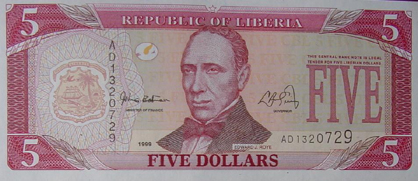|
|
President Edward J. Roye |
|
|
|
||
|
One of the gaps in Liberian History: The Roye episode shows that historical information on Liberia is fragmentary, unreliable, contradictory, and incomplete. The episode forms one of the most confusing ones in the history of the Liberian Republic. Edward James Roye was a pure descendent of the Ibo tribe (West Africa, Nigeria), born in Newark, Ohio, USA, on February 3, 1815. He was the first pure black person to become President of Liberia. He arrived as a new immigrant in 1846, one year before Independence was proclaimed. Roye became President in 1870 but was deposed the following year in the first coup d’état in Africa’s Oldest Republic. He died a mysterious death in Monrovia in early 1872. President Edward Roye was deposed on October 26, 1871. What exactly happened after his imprisonment is not known. The way in which, and even the day on which he died, are not known with certainty. According to some sources Roye escaped from prison but was drowned while trying to escape to a British ship. One author reports that the canoe in which Roye tried to make his escape capsized after which he drowned. The English money, which he had tied around his waist – thought to be the proceeds from the 1870 Loan - was taken from his body and stolen after his body was brought ashore (Huberich). Another author writes that the weight of the money around his waist was the cause of his drowning when he was swimming to a British ship (Banks Henries). According to other sources , Roye died in prison, after having been dragged half-naked through the streets of Monrovia after his attempt to escape from prison (Karnga, Cassell) . Cassell denies that Roye was drowned though he confirms that he carried money in a belt when he tried to escape. According to him, Roye was savagely beaten after being brought ashore and robbed of the money he carried in his belt. The Liberian President President William Tubman (1944 - 71) was among the many Liberians who believed the version according to which Roye was brutally beaten after his deposition. This story states that Roye’s (nude) body was dragged through the streets of Monrovia to a spot in Ashmun Street where he is reported to have died. This caused President Tubman to erect the new building of his political party, the True Whig Party (Roye’s party), on this same spot and to name the party headquarters after the deposed and – according to this version – murdered President (Yancy). One of Roye’s closest friends, Edward Blyden, however claimed that when “Roye escaped from prison and was waiting for a boat, a mulatto shot him and published he got drowned.” (Lynch) Banks Henries reports February 12, 1872 as the date on which former President Roye died. This agrees with the information provided by Guannu, another contemporary Liberian historian. Richardson also refers to the date of February 12, 1872 though with less certainty than the other two Liberian authors. However, a visit to the fourth floor of the President’s Executive Mansion in Monrovia which the present author made in 1978 concerned the portrait galery which showed portraits of all Liberian Presidents before William R. Tolbert, the then President of Liberia. It was noted that under the portrait of E. J. Roye was written: “died: February 11, 1872” (Van der Kraaij). Who became President of Liberia after Roye had been deposed? Huberich and Richardson e.g. state that he was succeeded by his Vice-President, James S. Smith. Banks Henries reports that one week after the imprisonment of Roye, Vice-President Smith took over the reins of Government. She even quotes from the Annual Message to the Legislature which President Smith pronounced, on December 4, 1871. Cassell, on the other hand, writes that “(…) the Vice-President (…) never appeared (…) to take over the reins of Government. Vice-President James S. Smith was a True Whig, and all True Whigs were being arrested then (…). In any event, Smith never became President of Liberia.” After this confusing period new (presidential) elections were organised and as most, if not all, leading officials of the True Whig Party had been jailed the Republican Party won these elections. In January 1872 the presidential power was handed over to a former (and Liberia’s first) President, J.J. Roberts, one of the leaders of the Republican Party.
|
|
|
|
Source:
References and recommended reading: Banks, A. Doris - Henries, ‘Presidents of the First African Republic’ (London, 1963. Banks, A. Doris - Henries, ‘Civics for Liberian Schools' (New York, 1966). Brown, George, ‘Economic History of Liberia’ (Washington, 1941). Cassell, C. Abayomi, ‘Liberia: History of the First African Republic’ (New York, 1970). Guannu, Joseph Saye, ‘Liberian History Since 1857’ (Monrovia, 1980). Holsoe,
Svend E., ‘Edward James Roye and His Parents’, in: The Liberian
Studies Journal, Vol. III, number 1, 1970-1971, pp. 41-53 (Newark,
1971). Huberich, Charles H., ‘The Political and Legislative History of Liberia', 2 volumes (New York, 1947). Karnga, Abaoymi, ‘History of Liberia’ (Liverpool, 1926). Lynch, Hollis R., ‘Edward Wilmot Blyden, Pan-Negro Patriot 1832-1912’ (Oxford, 1970). Richardson, Nathaniel R., ‘Liberia’s Past and Present’ (London, 1959). Yancy, Ernest Jerome, ‘Liberia – A nineteenth-twentieth century Miracle (Tel Aviv, 1971). |
||
| © fpm van der kraaij | ||
